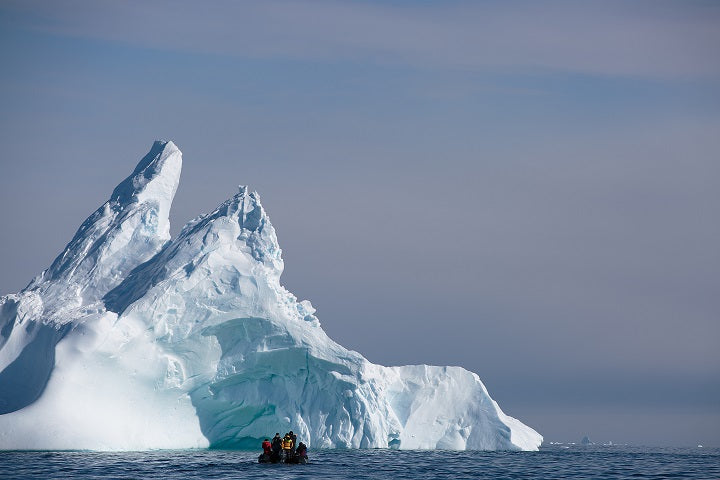
Floater Coats and Icebergs
Floater coats have a way of following me around the world.
I rocked a relic of a float coat as a high school friend and I paddled a raft made out of driftwood around Salt Spring Island, B.C. as part of a $100 bet with my Dad, we pulled it off, with the mission taking a solid week.

Later on in Antarctica, I found myself racing around a ship for the honour of ditching the yellow staff jacket for one of the ship’s beat up reddish-orange Mustang Survival float coats with “Zodiac Driver” written on the back.
For some reason, the Canadian nostalgia associated with the Mustang Survival kit has infected all the guides in the southern polar region. The convenience of a float coat means you can find yourself battling an international contingent for one of the ship’s two or three foam-filled Float Coats.

As the only Canadian guide onboard, I incorrectly thought I had a nationality-based claim to the moustache and mullet inducing nostalgia of a beat-up Float Coat. But the only guy who somehow managed to score perpetual rights to one of the ship jackets was an Australian nicknamed Snowy. With 27 years of experience—including over-wintering in Antarctica and working alongside everything from the Australian Antarctic Survey to eco-tourism vessels—he ditched standard crew uniform and rocked a float coat every single day.

The most legendary thing about Snowy wasn’t his rock-steady polar skills. It was that he never, ever, wore anything more than cheap rubber gumboots, jeans under rain pants, a cotton t-shirt (under the float coat, of course) and a baseball hat.
If you caught him wearing gloves (which I only saw once) or he switched to a wool toque it was indicative of the mercury dropping...and safe to assume no matter what you put on, you weren’t going to be warm enough.
He was the guy leaders turned to when things got spicy. On a late night staff-only reconnaissance mission to Smith Island—a first for a tourism outfit—who was driving? Snowy.

He’d navigate the boat through growlers and pack ice in uncharted waters, find a never before visited landing site, and keep it steady as swells rolled in and pummeled the boat; dodging rocks with the propeller as the back end of the boat was lifted and dropped onto the submerged boulders.
And when the transom was so low in the water, and the boat so full from waves that the sea sloshed in and out of the boat, Snowy was the guy driving us back to the ship with a big smile on his face.
No gloves, no wool hat.

From then on, I’d just smile looking over at Snowy. Rocking the orange Float Coat, dressed as minimally as he always did, as we all froze. No mullet, no moustache but a Mustang Survival man all the same.
And I'd think about someday getting that jacket back...

-----
Story and photos || Keegan Pearson
Keegan is a photographer and adventurer from Salt Spring Island, BC, Canada. He works around the world and is looking forward to bringing Mustang Survival along for the next adventure —sailing an offshore sailboat him and his partner recently bought down the west coast of Scotland. From there to Europe, then on westward, into the big blue.